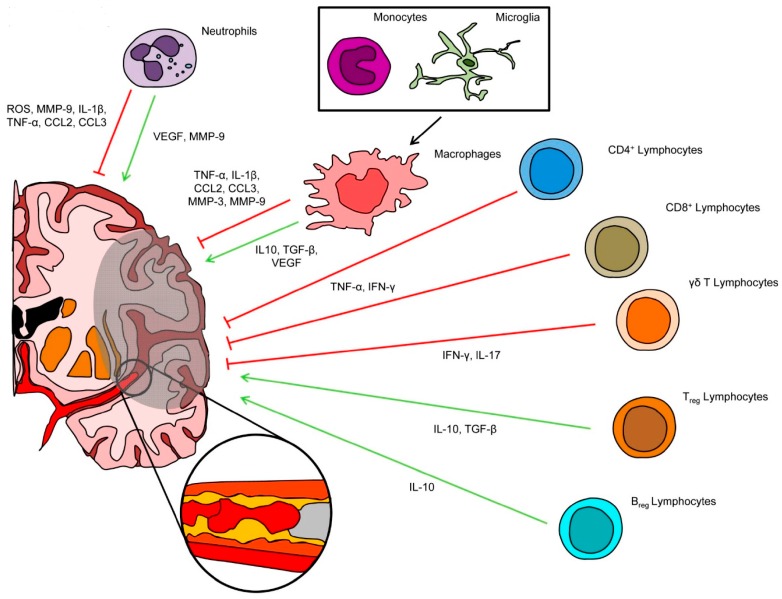Figure 2.
Inflammatory cells in post-ischemic brain injury and reparation. Inflammatory mediators released by the ischemic zone promote neutrophil activation and recruitment with a resulting effect on the blood-brain barrier and brain parenchyma. Resident macrophages of the brain (microglia) and circulating monocytes are early involved in the inflammatory response through an M1-switching with production of inflammatory mediators, such as reactive oxygen species, matrix metalloproteinases (MMPs), cytokines, and chemokines. Both neutrophils and macrophages (in particular M2 phenotype) are involved in late resolution through the production of anti-inflammatory and pro-angiogenic mediators. The adaptive immunity contribution is partly mediated by lymphocytes. CD4+, CD8+, and γδ T cells play a detrimental role, while Treg and Breg lymphocytes are involved in the resolution phase. IL: interleukin; TNF-α: tumour necrosis factor α; CCL: C-C motif chemokine ligand; VEGF: vascular endothelial growth factor; TGF-β: transforming growth factor β; IFN-γ: interferon γ.

